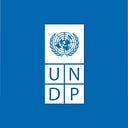Protecting livelihoods and nature on Inle Lake

The fear that haunts Ko Than Htoo, who is the main breadwinner for his five-member family, is that Inle Lake will one day dry up. He has been a boatman for over 25 years. Only two years ago he had to leave nearby Pekon Lake after the water level went down to the point of his boat running aground.
Enlisted as a Ramsar site and a UNESCO Man and the Biosphere Reserve, Inle Lake is the second largest in Myanmar. It has long hosted a rich diversity of bird and fish species. However that is under threat by deforestation, pollution, unsustainable agriculture and tourism.
“My livelihood is attached to this lake. I am concerned about its future because I have witnessed the impact of decreased water level in the other lake. The people never stopped cutting down trees up in the hills and every time there was rain, all the mud and silt from upstream would flow down to the lake,” says Ko Than Htoo. “We should do something to keep this lake alive so that it keeps us alive.”

There are thousands of people like Ko Than Htoo and the Intha community who depend on the wetland resources for their livelihoods.
There are several Intha villages on the lake and their floating gardens draw tourists. However, in the recent years, the haphazard use of chemical pesticides has contaminated the water. “We have no option but to use pesticide. If we don’t use it, the tomato plants hardly survive, as you can see there are several pests here,” says Daw Khin Htwe, 42, a tomato farmer.
An equally important environmental concern contaminated water from farms upstream, which has led to the rise of invasive species, such as water hyacinth and snails.
U Myint Soe, a paddy farmer, says he and his fellow farmers have long been using chemical fertilizers. “Rice is our main crop. We use chemical fertilizers for better production.”
In 2010 the region experienced one of the most severe droughts in its history bringing the lake to a record low. This badly affected the floating gardens, and tourism.

“It was a wake-up call,” says U Kyaw Kyaw Oo, Assistant Director at the Nyaung Shwe Irrigation Department at the Ministry of Agriculture, Livestock and Irrigation. The incident made everyone realize how important the lake was for the people and triggered the government to come up with the Long Term Restoration and Conservation Plan for Inle Lake, with support from UN Habitat.
UNDP joined forces to conserve the lake in 2012, when it launched a package of conservation initiatives in the watershed as a demonstration project. Funded by the Government of Norway, the programme showcased how was it possible to reverse the environmental degradation and improve peoples’ lives. Some 9,500 households lake engaged in organic farming, waste management, fishery control, and other eco-friendly farming methods.

“We were able to stop battery-shock fishing with every one of the community supporting the campaign,” says community leader U Zaw Win.
While some of these campaigns were quick to demonstrate tangible results, others, such as switching to organic farming, needed longer term engagement.
In fact, despite some impressive results, a great deal remained to be done to cover the entire watershed that hosts a population of over 160,000 people while at the same time addressing some of the socio-political complexities. This meant also engaging the other ethnic minorities who live in the mountains around the lake.

Under a new initiative launched in July 2018, and supported by the Government of Norway, UNDP is working with state and local governments to draft a new law to help reverse the environmental degradation and ensure an equitable and fair distribution of resources and responsibilities.
“What we are missing is a watershed level conservation law that could address the existing challenges in an integrated way,” says U Khin Maung Win, a Member of Parliament from Shan State.
U Kyaw Kyaw Oo, Assistant Director at the Nyaung Shwe Irrigation Department under the Ministry of Agriculture, Livestock and Irrigation, is an expert who has spent years studying the water flow and sediment dynamics in the watershed. The lake’s life, he says, depends on how the communities around it manage the natural water system. “If we let the streams flow down directly to the lake, that causes siltation. This is one of the many check dams we have built to help stop siltation,” he says.

The dams also recharge the groundwater and provide a reliable source of water for paddy farmers.
“UNDP is hopeful that with the active leadership of the local communities and parliamentarians, the Inle Lake will have a strong and effective management authority established under the Inle Lake Conservation Law by next year in order to conserve the lake and promote sustainable development of the lake region. We look forward to continuing our support to initiate this important new management approach,” says Gordon Johnson, UNDP Resident Representative in Myanmar.
All of this is good news for Ko Than Htoo. He says that despite the tourism industry going through a recession lately, he is optimistic that his boat business will come back stronger than ever. “Though the lake is giving just enough for my substance now, I am hopeful of the future. There will be more tourists coming and there will be good business.”

Photos by UNDP Myanmar/Kamal Raj Sigdel
